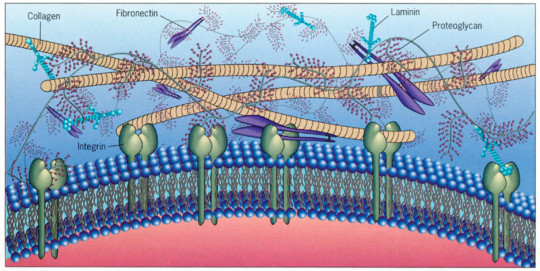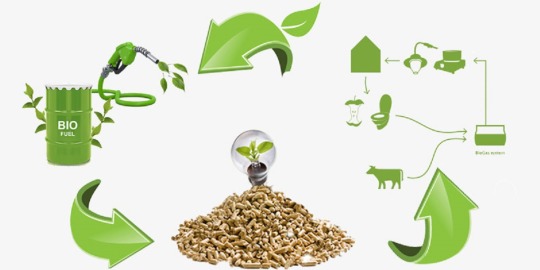Text
Navigating the Landscape of the Global G-Protein Coupled Receptors Market: Trends and Opportunities
Introduction: The global G-Protein Coupled Receptors (GPCRs) market is witnessing a paradigm shift, fueled by advances in molecular biology, structural biology, and computational modeling. As researchers uncover the intricate signaling mechanisms mediated by GPCRs, new opportunities emerge for drug discovery and therapeutic intervention. In this blog post, we explore key trends and opportunities shaping the landscape of the global GPCR market. Global G-protein coupled receptors market size is expected to reach US$ 7.86 Bn by 2031, from US$ 4.67 Bn in 2023, exhibiting a compound annual growth rate (CAGR) of 7.7% during the forecast period. Emerging Therapeutic Areas: Traditionally, G-Protein Coupled Receptors Market Demand drugs have been primarily focused on indications such as cardiovascular diseases, inflammation, and central nervous system disorders. However, recent research has identified GPCRs as key players in a broader range of therapeutic areas, including: Immuno-oncology: GPCRs expressed on immune cells modulate immune responses and tumor microenvironment, presenting new targets for cancer immunotherapy. Check more trending articles related to this topic: https://cmiinfopiece.blogspot.com/2024/03/fluid-dynamics-understanding-chemical.html
0 notes
Text
0 notes
Text
https://www.zedlike.com/blogs/166339/Global-Personalized-Cell-Therapy-Market-Is-Estimated-To-Witness-High
0 notes
Text
https://www.zedlike.com/blogs/166339/Global-Personalized-Cell-Therapy-Market-Is-Estimated-To-Witness-High
0 notes
Text
0 notes
Text
0 notes
Text
Hominy Feed Market Is Estimated To Witness High Growth Owing To Increasing Demand for Animal Feed

The global Hominy Feed Market is estimated to be valued at US$ 1.25 billion in 2023 and is expected to exhibit a CAGR of 6.8% over the forecast period 2023 to 2030, as highlighted in a new report published by Coherent Market Insights. Market Overview: Hominy feed is a byproduct of corn milling that is used as animal feed. It is rich in essential nutrients and serves as a cost-effective feed option for livestock. Hominy feed provides various advantages such as improved digestion, increased milk production, and enhanced growth in animals. The growing demand for animal feed, specifically in the livestock industry, is driving the market growth. The need for high-quality feed options that promote animal health and performance is boosting the demand for hominy feed. Market Key Trends: One key trend in the hominy feed market is the increasing adoption of sustainable farming practices. As consumers become more conscious about the environmental impact of food production, there is a growing demand for sustainable and eco-friendly animal feed options. Hominy feed, being a byproduct of corn milling, reduces food waste and promotes a circular economy. This trend is expected to drive the market growth, as farmers and feed manufacturers seek more sustainable alternatives. Furthermore, the market is witnessing an increasing focus on product innovation and development. Companies in the hominy feed market are investing in research and development to enhance the nutritional content of their products and cater to the specific dietary requirements of different animal species. This trend is driving the introduction of new and improved hominy feed formulations, expanding the market potential. In conclusion, the hominy feed market is expected to experience high growth due to the increasing demand for animal feed and the adoption of sustainable farming practices. The market is also witnessing a trend of product innovation and development to cater to evolving consumer needs. PEST Analysis: Political: The political factors influencing the hominy feed market include government regulations and policies related to agriculture, trade agreements, and food safety standards. Governments play a crucial role in setting policies that can affect the production, import, and export of hominy feed. Economic: The economic factors affecting the market include GDP growth, disposable income, and consumer spending patterns. The increasing per capita income and changing dietary habits of consumers are driving the demand for hominy feed, as it is viewed as a cost-effective and nutritious ingredient. Social: The social factors influencing the market include changing lifestyles, dietary preferences, and cultural influences. The growing awareness about the benefits of hominy feed in terms of its nutritional value and versatility has led to an increasing adoption of hominy feed in various food preparations. Technological: Technological factors impacting the market include advances in food processing techniques, automation, and packaging innovations. Technological advancements have led to improved production efficiency and quality control, ensuring the safety and consistency of hominy feed products. Key Takeaways: The global Hominy Feed Market Share is expected to witness high growth, exhibiting a CAGR of 6.8% over the forecast period. This growth can be attributed to the increasing demand for nutritious and cost-effective food ingredients in various culinary applications.
0 notes
Text
Healthcare Payer Network Management Market Is Estimated To Witness High Growth Owing To the Increasing Demand for Affordable and Efficient Healthcare Services

The global Healthcare Payer Network Management Market is estimated to be valued at US$ 5.35 billion in 2023 and is expected to exhibit a CAGR of 9% over the forecast period 2023-2030, as highlighted in a new report published by Coherent Market Insights. Market Overview: The Healthcare Payer Network Management Market refers to the management of networks between healthcare providers, payers, and patients. This market primarily focuses on enhancing the quality and efficiency of healthcare services while reducing costs. The need for healthcare payer network management solutions and services has greatly increased with the rising demand for affordable and efficient healthcare services worldwide. These solutions help in streamlining the operations of healthcare payers, improving the coordination between various stakeholders, and ensuring better access to healthcare services for patients. Market Key Trends: One key trend in the Healthcare Payer Network Management Market is the adoption of advanced technologies such as artificial intelligence (AI), machine learning (ML), and blockchain. These technologies enable healthcare payers to automate their processes, improve data management and security, and enhance the accuracy and efficiency of their network management activities. AI and ML algorithms can analyze vast amounts of healthcare data to identify patterns, detect fraud and abuse, and optimize network performance. Blockchain has the potential to revolutionize the healthcare payer network management by ensuring secure and transparent transactions, reducing administrative costs, and improving data interoperability. In conclusion, the Healthcare Payer Network Management Market is projected to witness substantial growth in the coming years. The increasing demand for affordable and efficient healthcare services, coupled with the adoption of advanced technologies, will drive the market's growth. PEST Analysis: Political: The political factors influencing the healthcare payer network management market include government regulations and policies related to healthcare, reimbursement policies, and changes in healthcare legislation. For example, changes in healthcare policies and regulations can impact the payment models and reimbursement rates for healthcare services. Economic: The economic factors affecting the market include the overall economic conditions, healthcare expenditure, and insurance coverage. Factors such as economic growth, disposable income, and healthcare spending patterns can influence the demand for payer network management solutions. Social: The social factors influencing the market include the demographic trends, patient preferences, and healthcare awareness. Changing demographics, increasing healthcare needs of aging population, and growing demand for personalized and patient-centric care are some of the social factors impacting the market. Technological: The technological factors include advancements in healthcare IT, digitalization, and evolving healthcare technology landscape. The adoption of electronic health records (EHRs), telemedicine, artificial intelligence (AI), and big data analytics are driving the demand for payer network management solutions. Key Takeaways: The global Healthcare Payer Network Management Market Share is expected to witness high growth, exhibiting a CAGR of 9% over the forecast period (2023-2030). This growth can be attributed to the increasing need for efficient management of healthcare networks, rising healthcare expenditures, and the need for cost containment by payers. In terms of regional analysis, North America is anticipated to be the fastest-growing and dominating region in the healthcare payer network management market. This can be attributed to the presence of dominant players, well-established healthcare infrastructure, favorable government initiatives, and high healthcare spending in the region. Key players
#Healthcare IT#Healthcare Industry#Healthcare Payer Network Management#Healthcare Payer Network Management Market
0 notes
Text
Healthcare Middleware Market Is Estimated To Witness High Growth Owing To Increasing Demand for Data Integration and Connectivity

The global Healthcare Middleware Market is estimated to be valued at US$ 2.69 billion in 2023 and is expected to exhibit a CAGR of 10% over the forecast period from 2023 to 2030, as highlighted in a new report published by Coherent Market Insights. Market Overview: Healthcare middleware refers to software that acts as a bridge between different healthcare applications, allowing for seamless integration and communication between various systems. It facilitates the exchange of data and information between different healthcare systems, such as electronic medical records (EMRs), laboratory information systems (LIS), and radiology information systems (RIS), among others. The use of healthcare middleware offers several advantages, including improved efficiency, reduced errors, and enhanced interoperability. Market Key Trends: One key trend in the healthcare middleware market is the increasing demand for data integration and connectivity. Healthcare organizations are facing challenges in consolidating data from multiple sources and ensuring interoperability between different systems. Middleware solutions provide the necessary infrastructure to integrate data from various healthcare systems, enabling efficient data management and seamless connectivity. This trend is driven by the growing adoption of electronic health records (EHRs) and the need for real-time access to patient information across different healthcare settings. Furthermore, the increasing focus on data analytics and population health management is further contributing to the demand for healthcare middleware solutions. Overall, the healthcare middleware market is expected to witness high growth due to the increasing demand for data integration and connectivity. As healthcare organizations strive to improve efficiency and interoperability in their systems, the adoption of healthcare middleware solutions is expected to increase. PEST Analysis: Political: The political factors affecting the healthcare middleware market include government regulations, policies, and initiatives related to healthcare technology. For example, government mandates for the adoption of electronic health records and interoperability standards can drive the demand for healthcare middleware solutions. Economic: The economic factors influencing the market include healthcare expenditure and budgetary constraints. Economic growth, healthcare infrastructure development, and reimbursement policies can impact the adoption and investment in healthcare middleware technologies. Social: Social factors such as the aging population, increasing prevalence of chronic diseases, and the rising need for personalized healthcare drive the demand for healthcare middleware solutions. Additionally, the growing awareness and acceptance of telehealth and remote patient monitoring contribute to market growth. Technological: Technological factors include advancements in cloud computing, IoT, big data analytics, and artificial intelligence, which have a significant impact on healthcare middleware. These technologies enable seamless integration and communication between various healthcare systems, improving data exchange and interoperability. Key Takeaways: The global Healthcare Middleware Market Share is expected to witness high growth, exhibiting a CAGR of 10% over the forecast period from 2023 to 2030. This growth can be attributed to the increasing adoption of healthcare IT solutions, the need for real-time access to patient data, and the demand for interoperability between disparate healthcare systems. The fastest-growing and dominating region in the healthcare middleware market is North America. This can be attributed to factors such as the presence of advanced healthcare infrastructure, government initiatives promoting interoperability, and high healthcare expenditure. The United States, in particular, is a key market for healthcare
0 notes
Text
Global Gaseous and Liquid Helium Market Is Estimated To Witness High Growth Owing To Increasing Demand for Cryogenics

The global Gaseous and Liquid Helium Market is estimated to be valued at US$ 7.05 billion in 2023 and is expected to exhibit a CAGR of 22.9% over the forecast period 2023-2030, as highlighted in a new report published by Coherent Market Insights. Market Overview: The gaseous and liquid helium market encompasses the production and distribution of helium in its gaseous and liquid forms. Helium is a naturally occurring gas that is used for various applications in industries such as healthcare, electronics, and aerospace. It is known for its low boiling point and inertness, making it an ideal choice for cryogenic applications. The growing demand for cryogenics, particularly in the healthcare sector, is driving the growth of the gaseous and liquid helium market. Market Key Trends: One key trend in the gaseous and liquid helium market is the increasing demand for helium in the healthcare industry. Helium is widely used in medical imaging techniques such as magnetic resonance imaging (MRI) and positron emission tomography (PET). The inert nature of helium allows it to be used safely in these imaging techniques without any adverse effects on the human body. The rising prevalence of chronic diseases and the increasing need for accurate diagnostic tools are driving the demand for helium in the healthcare industry. For example, helium is used in MRI machines to cool down the superconducting magnets, which generate a strong magnetic field necessary for imaging. Without helium, MRI machines would not be able to function properly. As the demand for MRI scans continues to rise, the demand for helium in the healthcare industry is also expected to increase. PEST Analysis: - Political: The political stability of countries that produce and export helium can impact the supply and pricing of helium in the market. - Economic: The economic growth of countries and their healthcare expenditures influence the demand for helium in the healthcare industry. - Social: The increasing prevalence of chronic diseases and the need for accurate medical imaging techniques drive the demand for helium. - Technological: Advancements in medical imaging technology and the development of new cryogenic applications create new opportunities for the gaseous and liquid helium market. Key Takeaways: 1: The global Gaseous And Liquid Helium Market Share is expected to witness high growth, exhibiting a CAGR of 22.9% over the forecast period, due to increasing demand for cryogenics. The healthcare industry, in particular, is driving the demand for helium due to its crucial role in medical imaging techniques. 2: North America is the fastest-growing and dominating region in the gaseous and liquid helium market. The region has a well-established healthcare infrastructure and a high demand for medical imaging techniques. 3: Key players operating in the global gaseous and liquid helium market are Air Products and Chemicals, Inc., Linde plc, Praxair, Inc. (now part of Linde), Air Liquide S.A., Gazprom, RasGas (now part of Qatar Petroleum), ExxonMobil Corporation, Matheson Tri-Gas, Inc., Iwatani Corporation, and Messer Group GmbH. In conclusion, the gaseous and liquid helium market is expected to experience significant growth in the coming years, driven by the increasing demand for cryogenics, especially in the healthcare sector. The market is dominated by key players who play a crucial role in meeting the growing demand for helium. North America is leading in terms of market growth, fueled by its advanced healthcare infrastructure.
0 notes
Text
Firefighting Foam Market is Estimated To Witness High Growth Owing To Stringent Safety Regulations

The global Firefighting Foam Market is estimated to be valued at US$ 7.31 billion in 2023 and is expected to exhibit a CAGR of 5.9% over the forecast period 2023-2030, as highlighted in a new report published by Coherent Market Insights. Market Overview: Firefighting foam is a specialized product used for extinguishing flammable liquid fires. It is highly effective in suppressing fires by forming a thick blanket over the fire, thus preventing oxygen from reaching the fuel and cooling the flames. Firefighting foam offers several advantages such as quick extinguishing capabilities, improved fire retardation, and reduced re-ignition. The increasing need for effective and efficient fire control methods, along with the stringent safety regulations imposed by various government agencies, are driving the demand for firefighting foam in the market. Market Key Trends: One key trend in the firefighting foam market is the growing adoption of environmentally friendly foam solutions. With increasing concerns regarding the environmental impact of firefighting foam, manufacturers are focusing on developing environmentally sustainable foam solutions.
These environmentally friendly foams are biodegradable and possess low toxicity, reducing the potential harm caused to the environment during firefighting activities. This trend is driven by the rising awareness among end-users and government regulations promoting the use of eco-friendly firefighting products. Overall, the global firefighting foam market is expected to witness significant growth due to the increased emphasis on fire safety and the growing demand for environmentally friendly foam solutions. PEST Analysis: Political: The political factors impacting the firefighting foam market include regulations and policies related to fire safety and environmental protection. Governments around the world are increasingly implementing stringent regulations to restrict the use of firefighting foams containing harmful chemicals like PFAS. This has led to the development and adoption of eco-friendly and more sustainable alternatives. Economic: The economic factors affecting the market include the overall economic growth and investments in infrastructure development.
As economies grow, there is an increased demand for fire safety measures and firefighting equipment, including foams. Investments in industries such as oil and gas, aerospace, and construction also contribute to the demand for firefighting foams. Social: The social factors influencing the market include the awareness and concern for fire safety among individuals and organizations. With the increasing number of fire incidents and the potential risks associated with them, there is a greater emphasis on implementing effective firefighting measures. The demand for firefighting foams is driven by the need to protect lives and minimize property damage. Technological: The technological factors impacting the market include advancements in foam formulation and delivery systems. Manufacturers are constantly developing innovative products that are more efficient in suppressing fires. These advancements include the development of fluorine-free foams, improved foam stability, and better compatibility with various fire hazards.
Key Takeaways: The global Firefighting Foam Market Share is expected to witness high growth, exhibiting a CAGR of 5.9% over the forecast period (2023-2030). This growth is driven by several factors, including increasing regulations and policies focused on fire safety and the environment. The shift towards eco-friendly foams is expected to boost market demand. In terms of regional analysis, North America is expected to be the fastest-growing and dominating region in the firefighting foam market. This can be attributed to the stringent regulations in the region, the presence of major key players, and increased awareness and investment in fire safety measures. Key players operating.
1 note
·
View note
Text
Extracellular Matrix Market Is Estimated To Witness High Growth Owing To Increasing Demand for Regenerative Medicine

The global Extracellular Matrix Market is estimated to be valued at US$ 46.12 billion in 2023 and is expected to exhibit a CAGR of 9.8% over the forecast period 2023-2030, as highlighted in a new report published by Coherent Market Insights. Market Overview: Extracellular matrix (ECM) is a network of extracellular molecules such as proteins, glycoproteins, and proteoglycans, which provides structural and biochemical support to the surrounding cells. ECM is widely used in regenerative medicine to promote tissue repair and regeneration. The demand for ECM is increasing due to the growing prevalence of chronic diseases, such as cardiovascular diseases and diabetes, which require tissue engineering and regenerative medicine solutions. Furthermore, advancements in ECM technology and the development of innovative ECM-based products are also driving market growth. Market Key Trends: One key trend in the extracellular matrix market is the increasing adoption of three-dimensional (3D) cell culture systems. 3D cell culture systems mimic the in vivo environment more accurately compared to traditional two-dimensional (2D) cell culture systems. They enable more physiologically relevant cell behaviors and provide better predictive models for drug discovery and toxicity testing. ECM plays a crucial role in supporting 3D cell culture systems by providing a natural and biocompatible scaffold for cellular growth and organization. The adoption of 3D cell culture systems is expected to increase in the coming years, driving the demand for ECM. The extracellular matrix market is projected to witness significant growth in the coming years due to the increasing demand for regenerative medicine and the adoption of 3D cell culture systems. This market offers lucrative opportunities for key players such as Thermo Fisher Scientific, DSM, Acelity (KCI Concepts), and others to develop innovative ECM-based products and expand their market presence. PEST Analysis: Political: The political factors in the extracellular matrix market involve regulations and policies set by government bodies. These regulations can influence the development and distribution of extracellular matrix products. For example, changes in regulations related to the approval and licensing of medical devices can impact the market. Economic: Economic factors affecting the extracellular matrix market include factors such as GDP growth, healthcare expenditure, and disposable income. The growth of the market can be influenced by economic conditions, as well as the affordability and accessibility of extracellular matrix products. Social: Social factors include demographic trends, cultural preferences, and patient awareness. Increasing awareness of the benefits of extracellular matrix in tissue regeneration and wound healing among patients and healthcare professionals can drive market growth. Technological: Technological factors include advancements in technology that impact the production and application of extracellular matrix products. Technological advancements in tissue engineering and regenerative medicine can drive innovation in the market. Key Takeaways: Market size: The global Extracellular Matrix Market Share is expected to witness high growth, exhibiting a CAGR of 9.8% over the forecast period (2023-2030). This growth can be attributed to the increasing prevalence of chronic diseases and the growing demand for regenerative medicine. The market size is projected to reach US$ 46.12 billion by 2023. Regional analysis: North America is expected to be the fastest-growing and dominating region in the extracellular matrix market. Factors such as advanced healthcare infrastructure, high healthcare expenditure, and a large patient pool
1 note
·
View note
Text
Global Body Armor Plates Market Is Estimated To Witness High Growth Owing To Increased Demand for Lightweight and Advanced Protection Solutions

The global Body Armor Plates Market is estimated to be valued at US$ 1.93 billion in 2022 and is expected to exhibit a CAGR of 5.2% over the forecast period 2023 to 2030, as highlighted in a new report published by Coherent Market Insights. Market Overview Body armor plates are protective shields worn by military personnel, law enforcement officers, and security personnel to protect against projectile threats. These plates are typically made from strong materials such as ceramics, composites, or steel, and are designed to provide enhanced protection against bullets, shrapnel, and other ballistic threats. Body armor plates offer several advantages, including improved safety for personnel operating in high-risk environments, increased mobility due to lightweight design, and reduced fatality rate from projectile attacks. Market key trends One key trend in the Body Armor Plates Market is the increasing demand for lightweight and advanced protection solutions. With the evolving nature of modern warfare and the rise in terrorist activities, there is a growing need for body armor plates that provide enhanced protection while maintaining comfort and mobility. Manufacturers are investing in research and development to develop lighter and more advanced materials, such as advanced ceramics and fibers, to meet this demand. For example, Point Blank Enterprises, Inc., a key player in the market, offers lightweight body armor plates made from advanced materials like Dyneema and Spectra Shield. PEST Analysis Political: Governments worldwide are focusing on enhancing the safety and security of their personnel, which is driving the demand for body armor plates. Increasing geopolitical tensions and the rise in terrorist activities are also influencing government expenditure on defense and security. Economic: The global defense budget is on the rise, particularly in emerging economies such as India, China, and Brazil. This increased spending on defense is expected to drive the demand for body armor plates. Social: Growing public awareness about the importance of personal safety and the increasing adoption of body armor among law enforcement officers and civilians are contributing to the market growth. Technological: Advancements in material science and manufacturing technologies are enabling the development of lightweight and advanced body armor plates. The integration of technologies such as nanotechnology and smart textiles in body armor plates is further driving market growth. Key Takeaways - The global Armor Plates Market Share is expected to witness high growth, exhibiting a CAGR of 5.2% over the forecast period, due to increasing geopolitical tensions and the need for advanced protection solutions. - North America is the fastest-growing and dominating region in the Body Armor Plates Market, owing to the presence of major market players and the increasing adoption of body armor by the military and law enforcement agencies. - Key players operating in the global Body Armor Plates Market are Aegis Engineering Ltd, Armored Republic, LLC, BAE Systems, Ballistic Body Armour Pty, Ceradyne Inc. (Subsidiary of 3M), Craig International Ballistics Pty Ltd., Hellweg International, Kejo Limited Company, Pacific Safety Products, and Point Blank Enterprises, Inc. In conclusion, the global Body Armor Plates Market is poised for significant growth in the coming years due to increased demand for lightweight and advanced protection solutions. Governments' focus on enhancing personal safety and rising defense expenditure are key drivers for market growth. The integration of advanced materials and technologies in body armor plates will continue to fuel market expansion. North America is expected to be the fastest-growing region, while major market players such as Aegis Engineering Ltd and Point Blank Enterprises, Inc. will play a crucial role in shaping the market landscape.
0 notes
Text
Biodegradable Foam Market is Estimated To Witness High Growth Owing To Increasing Demand for Sustainable Packaging Solutions

The global Biodegradable Foam Market is estimated to be valued at US$ 906.1 million in 2023 and is expected to exhibit a CAGR of 10.5% over the forecast period 2023-2030, as highlighted in a new report published by Coherent Market Insights. Market Overview: Biodegradable foam refers to a type of material that is designed to break down naturally in the environment, thus minimizing its impact on the ecosystem. It is primarily used for packaging applications as an alternative to traditional foam materials, such as expanded polystyrene (EPS). Biodegradable foam offers several advantages, including reduced carbon footprint, increased recyclability, and enhanced sustainability. The need for products associated with the biodegradable foam market is driven by the growing demand for sustainable packaging solutions across various industries. Market Key Trends: One key trend driving the biodegradable foam market is the increasing focus on the development of renewable and sustainable materials. With growing concerns about plastic waste and its impact on the environment, there is a rising demand for eco-friendly alternatives. Biodegradable foam provides a solution to this problem by offering a material that can degrade naturally over time without harming the ecosystem. It also offers similar performance attributes to traditional foam materials, ensuring reliable packaging protection. For example, BASF SE, a leading player in the biodegradable foam market, introduced a product line called Ecovio® Foam. This innovative solution is made from renewable raw materials, such as starch and polylactic acid (PLA). It provides excellent cushioning properties and can be easily composted, making it an ideal choice for sustainable packaging applications. PEST Analysis: Political: The political landscape plays a crucial role in shaping the biodegradable foam market. Governments worldwide are implementing stringent regulations and policies to reduce plastic waste and promote sustainable practices. These regulations create a favorable environment for the adoption of biodegradable foam materials. Economic: The economic factors influencing the market include the increasing consumer preference for environmentally friendly products, rapid industrialization, and the growth of end-use industries such as food and beverage, personal care, and electronics. Social: Changing consumer preferences and growing awareness about environmental conservation are driving the demand for biodegradable foam. Consumers are actively seeking sustainable packaging solutions and are willing to pay a premium for eco-friendly products. Technological: Advancements in material science and manufacturing processes have led to the development of innovative biodegradable foam solutions with improved performance characteristics. These technological advancements play a crucial role in driving the adoption of these materials in various applications. Key Takeaways: 1) Market Size: The global Biodegradable Foam Market Share is expected to witness high growth, exhibiting a CAGR of 10.5% over the forecast period. This growth can be attributed to increasing demand for sustainable packaging solutions driven by environmental concerns and regulatory pressure. For example, the European Union's ban on single-use plastics is expected to boost the demand for biodegradable foam materials in the region. 2) Regional Analysis: North America is expected to be the fastest-growing and dominating region in the biodegradable foam market. This growth can be attributed to the region's strict environmental regulations, increasing consumer awareness about sustainable products, and the presence of major market players.
0 notes
Text
Asia Waste and Biomass Valorization Market: Unlocking the Potential of Sustainable Solutions

Market Overview: The Asia Waste and Biomass Valorization Market is estimated to be valued at US$ 21.78 billion in 2023 and is expected to exhibit a CAGR of 7.8% from 2023 to 2030, as highlighted in a new report published by Coherent Market Insights. This market focuses on the effective and sustainable utilization of waste and biomass resources, offering significant environmental and economic benefits. With the increasing realization of the impact of waste on the environment and the need for sustainable solutions, the waste and biomass valorization market has gained momentum. This market offers innovative technologies and processes that convert waste and biomass into valuable products such as biofuels, biochemicals, and bioenergy. The advantages of these products include reduced greenhouse gas emissions, diversification of energy sources, and resource optimization. Market Key Trends: One key trend shaping the Asia Waste and Biomass Valorization Market is the growing adoption of biogas production. Biogas, a byproduct of waste and biomass valorization, is emerging as a key renewable energy source. It is being used for power generation, heating, and as a transportation fuel. The utilization of biogas offers numerous benefits such as reduced dependence on fossil fuels, lower carbon emissions, and waste management solutions. For instance, LG Chem in South Korea has invested in biogas plants to produce biomethane from organic waste. This biomethane is used as a raw material for the production of eco-friendly plastics. This strategic move not only contributes to waste management but also reflects the increasing trend of circular economy practices. Porter's Analysis: Threat of new entrants: The waste and biomass valorization market requires significant capital investment and technical expertise, acting as a barrier for new entrants. Established players hold an advantage in terms of technology, equipment, and strong industry partnerships. Bargaining power of buyers: Buyers in the waste and biomass valorization market have limited bargaining power due to the criticality of waste management solutions. Waste generation is an ongoing challenge, and industries seek reliable and sustainable solutions, leading to reduced buyer bargaining power. Bargaining power of suppliers: Suppliers of key equipment and technologies hold some power due to their specialized offerings. However, the market presents opportunities for collaboration between suppliers and market players to enhance the efficiency and effectiveness of waste valorization processes. Threat of new substitutes: The waste and biomass valorization market is witnessing continuous innovation, making it challenging for substitutes to enter the market. The high level of expertise required, coupled with the focus on sustainability, makes it difficult for alternative solutions to match the benefits offered by waste and biomass valorization. Competitive rivalry: The waste and biomass valorization market is highly competitive, with key players continuously investing in research and development activities to improve their product offerings and expand their market presence. This rivalry fosters innovation and drives overall market growth. Key Takeaways: 1. The Asia Waste And Biomass Valorization Market Share is expected to witness high growth, with a projected CAGR of 7.8% over the forecast period. This growth is primarily driven by the increasing need for sustainable waste management solutions, coupled with the advantages offered by valorization processes. 2. China is anticipated to be the fastest-growing and dominating region in the waste and biomass valorization market. The country's growing population, rapid industrialization, and strong government initiatives to promote environmental sustainability contribute to its market dominance.
#Energy#Asia Waste and Biomass Valorization Market#Japan Waste and Biomass Valorization Market#China Waste and Biomass Valorization Market#South Korea Waste and Biomass Valorization Market#India Waste and Biomass Valorization Market
0 notes
Text
Global Video Borescopes Market Is Estimated To Witness High Growth Owing To Rising Demand for Non-destructive Testing Equipment

The global Video Borescopes Market is estimated to be valued at US $814.16 million in 2023 and is expected to exhibit a CAGR of 6.5% over the forecast period 2023-2030, as highlighted in a new report published by Coherent Market Insights. Market Overview: Video borescopes are optical devices used for non-destructive testing in industries such as automotive, aerospace, power generation, and manufacturing. These devices allow professionals to inspect and analyze the internal components of machines and structures without dismantling them. With their compact design and high-quality imaging capabilities, video borescopes offer numerous advantages over traditional inspection methods, such as reducing downtime, preventing unnecessary repairs, and ensuring the safety of workers. Market key trends: One key trend driving the growth of the video borescopes market is the increasing demand for advanced non-destructive testing equipment. As industries focus on improving operational efficiency and minimizing maintenance costs, there is a growing need for inspection tools that can provide accurate and reliable results without causing any disruption to the production process. Video borescopes fulfill this requirement by allowing real-time inspection of hard-to-reach areas, helping companies identify potential issues before they escalate into major problems. For example, in the automotive industry, video borescopes are used to analyze engine cylinders, valves, and pistons, ensuring optimal performance and reducing the risk of mechanical failures. PEST Analysis: - Political: Government regulations regarding safety standards in industries such as aerospace and manufacturing drive the adoption of video borescopes. - Economic: The increasing investments in infrastructure development and manufacturing industries across emerging economies contribute to market growth. - Social: The focus on worker safety and the need for accurate inspection tools create a favorable environment for video borescope adoption. - Technological: Advances in imaging technology, such as high-definition cameras and wireless connectivity, enhance the capabilities of video borescopes and widen their scope of applications. Key Takeaways: - The global Video Borescopes Market Share is expected to witness high growth, exhibiting a CAGR of 6.5% over the forecast period, due to increasing demand for non-destructive testing equipment. - North America is expected to dominate the market, owing to the presence of key players and the widespread adoption of video borescopes in industries such as aerospace and automotive. - Key players operating in the global video borescopes market include Olympus Corporation, GE Inspection Technologies (now part of Baker Hughes), Karl Storz GmbH & Co. KG, SKF Group, FLIR Systems Inc., Yateks Corporation, PCE Instruments, Vizaar Industrial Imaging AG, VJ Technologies Inc., Gradient Lens Corporation, Medit Inc., RF System Lab (now owned by Olympus Corporation), Coantec Automation Technology Co. Ltd.,
0 notes
Text
Global Sinking Fish Feed Market Is Estimated To Witness High Growth Owing To Increasing Aquaculture Practices

The global sinking fish feed market is estimated to be valued at US$ 10.76 billion in 2023 and is expected to exhibit a CAGR of 4.5% over the forecast period 2023 to 2030, as highlighted in a new report published by Coherent Market Insights. Market Overview: Sinking fish feed refers to the specialized type of feed that is used for feeding fish species which primarily reside at the bottom of the water bodies. This type of feed is denser and sinks rapidly, making it easily accessible to bottom-dwelling fish. Sinking fish feed offers several advantages, such as better feeding conversion ratio, reduced feed wastage, and increased protein intake for fish. The need for sinking fish feed is associated with the growing aquaculture industry, as it provides essential nutrients required for the growth and development of farmed fish. Market Key Trends: One key trend in the global sinking fish feed market is the increasing adoption of technology-driven feed formulations. With advancements in aquaculture practices, there is a rising demand for specialized sinking fish feed that meets the nutritional requirements of different fish species. Manufacturers are leveraging technologies such as genetic manipulation, functional genomics, and feed additives to develop high-quality sinking fish feeds. For example, Skretting has developed "MicroBalance" technology, which focuses on enhancing digestion and absorption efficiency in fish, resulting in improved growth and health. PEST Analysis: Political: The political factors influencing the sinking fish feed market include government regulations on aquaculture practices, environmental policies, and import-export regulations. For instance, in some countries, stringent regulations are imposed on fish farming practices to ensure environmental sustainability. Economic: Economic factors such as GDP growth, disposable income, and consumer spending patterns influence the demand for sinking fish feed. As economies grow, the demand for seafood increases, leading to higher fish production and the need for quality sinking fish feed. Social: The social factors influencing the market include changing consumer preferences towards healthy seafood options, increasing awareness about the benefits of aquaculture, and the rise in fish consumption due to its nutritional value. Technological: Technological advancements play a crucial role in the sinking fish feed market. Innovations in feed formulations, feed additives, and genetic manipulation techniques are enhancing the quality and nutritional value of sinking fish feed. Additionally, advancements in packaging technologies ensure the preservation of feed quality during transportation and storage. Key Takeaways: - The global Sinking Fish Feed Market Share is expected to witness high growth, exhibiting a CAGR of 4.5% over the forecast period, due to increasing aquaculture practices. - Regional analysis shows that Asia Pacific is the fastest-growing and dominating region in the sinking fish feed market. Factors such as favorable climatic conditions for aquaculture, increasing fish consumption, and government initiatives to promote sustainable aquaculture drive the market growth in this region. - Key players operating in the global sinking fish feed market include Cargill Aqua Nutrition, Skretting (Nutreco), Biomar, Alltech, Ridley Corporation Limited, CP Group, Charoen Pokphand Foods (CPF), Nutriad International, BioMar Group, Nutra Blend LLC, Guangdong Haid Group Co., Ltd., Tongwei Group, Avanti Feeds Limited, Nutrivet, and BRF S.A. These companies focus on product innovation, strategic partnerships, and mergers & acquisitions
0 notes